Why Are Street Signs Different Colors?
Street Sign Colors and Meanings
Street signs come in many different colors, making them difficult to keep track of. Knowing the differences between what each color means could be the difference between getting lost and arriving at your destination safely. Street signs are different colors because, to put it simply, they mean different things.
In order to help you understand why street signs are different colors, we are listing each color followed by their corresponding regulations. The color codes below are taken from the most up-to-date Manual on Uniform Traffic Control Devices (MUTCD) for Streets and Highways. This color code system should give you a strong understanding of how street signs were developed.
What Do White and Black Street Signs Mean?
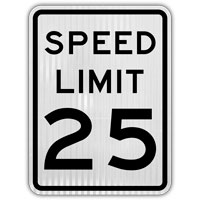
The white and black color scheme is reserved for posted regulations. If you see one of these signs, they’ll likely also be in the shape of a rectangle or square. These shapes are meant to notify drivers of various regulations. Some examples of what white and black signs can be used for include:
- One way
- Keep right
- Speed limit
- No turn on red
What Do Blue Street Signs Mean?
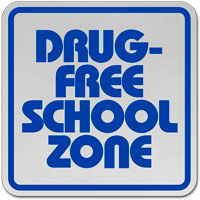
Blue street signs are for road user services guidance, evacuation routes, and tourist information. Some examples of what blue signs can be used for include:
- Fueling stations
- Restaurants
- Hurricane evacuation routes
- Rest areas
What Do Brown Street Signs Mean?
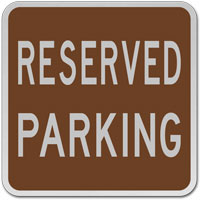
Brown signs are similar to blue signs, but are reserved for recreational and cultural interest areas. Some examples of what brown signs can be used for include:
- Trails or hiking locations
- Theme parks
- Historic buildings
- Museums
- Zoos
What Do Fluorescent Yellow-Green Street Signs Mean?
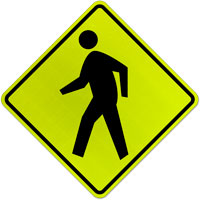
These signs are primarily used to warn drivers that there are pedestrians present or they are entering a school area. Some examples of what fluorescent yellow-green signs can be used for include:
- School zones
- Pedestrian warnings
- Bicycle warnings
- Playground warnings
What Do Fluorescent Pink Street Signs Mean?
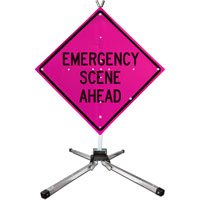
These signs are unique in color and purpose. They are strictly used for incident management. Some examples of what fluorescent pink signs can be used for include:
- Emergency scenes
- Motor vehicle accidents
What Do Green Street Signs Mean?
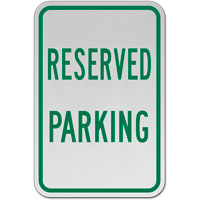
These signs offer directional guidance to drivers. Some examples of what green signs can be used for include:
- Light rail transit station ahead
- Interchange exit
- Roadway identification and mile markers
- Destination distance
What Do Orange Street Signs Mean?
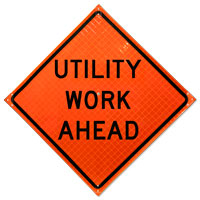
Orange signs are fairly similar to the pink signs with one major difference: orange signs are used for planned temporary events such as road construction and pink signs are used specifically for unplanned events like car accidents. Some examples of what orange signs can be used for include:
- Road closed
- Road work ahead
- Men at work
- Detour ahead
- Construction ahead
What Do Purple Street Signs Mean?
Purple signs are solely for the purposes of restricting lanes to use by vehicles with register electronic toll collection (ETC) accounts such as:
- E-ZPass
- SunPass
- FasTrack
What Do Red Street Signs Mean?
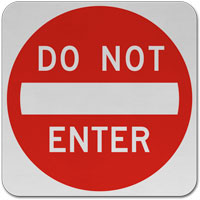
Red signs simply mean stop or prohibition. Some examples of what red signs can be used for include:
- Stop
- Do not enter
- Yield
What Do Yellow Street Signs Mean?
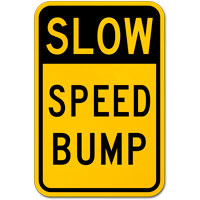
Yellow signs are commonly permanent warning signs in areas where the driver needs to be informed of unexpected conditions. Some examples of what yellow signs can be used for include:
- Signal ahead
- Slippery when wet
- Speed bump
- Animal crossing
- Dead end
The color of a street sign is an important factor when attempting to understand what that sign means. In some instances, the color of the sign is more important than actual message of the sign. For example, think about how many times you’ve seen a red octagonal sign and instantly knew that it meant “stop.” Even if you didn’t see the word stop on the sign, you’d likely still know what the sign meant for you as a driver. That is the power of knowing what each color represents.
SafetySign.com does not recommend or specify the use of a specific safety sign because it does not have knowledge of the hazard(s) our customers are identifying. It is the customer’s sole responsibility to identify the hazard(s) that may be present and select one or more signs (stock or custom) that accurately identify their specific hazard(s) and complies with any applicable federal, state or local laws or regulations, any worksite specific rules or regulations and/or any applicable safety standards (including, without limitation, MUTCD standards). SafetySign.com disclaims any and all liability (excluding liability for our Product Warranty contained in our Terms and Conditions) for any sign selected by a customer and shall not be responsible for any personal injury or property damage resulting from the use of signs purchased from it or for the independent interpretation made of any applicable federal, state or local laws or regulations, any worksite specific rules or regulations, and/or any applicable safety standards (including, without limitation, MUTCD standards). Customer shall indemnify and hold SafetySign.com and its corporate parent and its officers, directors and affiliates harmless from and against any and all claims, loss or expense (including attorneys’ fees) arising from or related to the purchase and use by customer or any third party of any sign purchased by customer from SafetySign.com.
